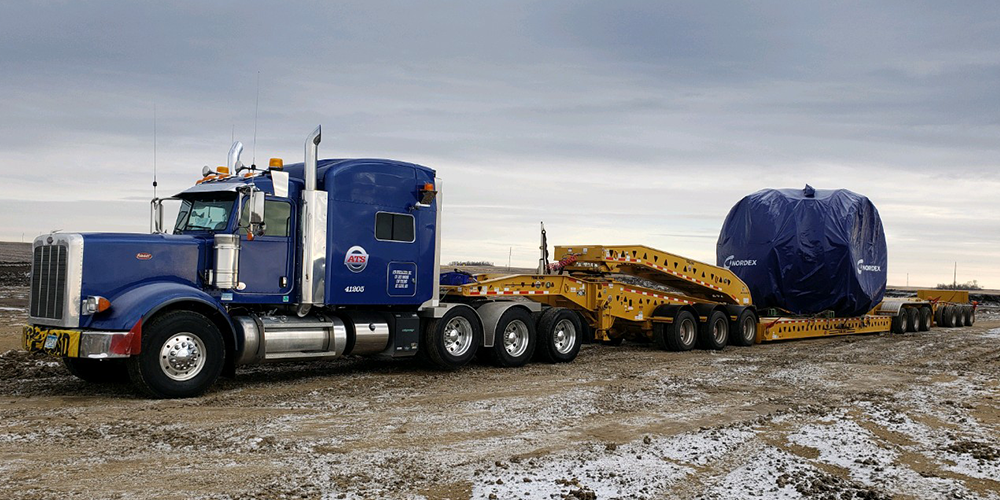
When it comes to planning projects, there are a lot of variables that can be the difference between success and failure. Some things, like the weather, are out of your control. But there are several things you can control that can get your project started on the right foot.
After decades of helping developers like you plan various aspects of their projects, we’ve learned several best practices that the most successful projects include in their planning process.
In this guide, you’ll learn the six steps to include in your planning process for every project going forward.
Involve Transportation Early in the Planning Process
Maybe it’s because we’ve seen the positive impact of this firsthand many times, but we feel that this is the most important step to take to ensure success.
Can Help Reduce Cost
We’ve witnessed so many cases where added costs have ballooned out of control because of things that were overlooked — and things a transportation provider could have prevented.
It’s never too early to involve a transportation expert — even before the manufacturing process begins. Seriously.
To illustrate what we mean, let’s say you are trying to choose between two different manufacturers for your widget. As a transportation provider that has your best interests in mind, we might suggest one over the other, because that could literally save you thousands of dollars on transportation costs alone.
Depending on how large your freight is, that’ll also limit which routes you’re allowed to take. The further your freight needs to travel, the more it’s going to cost you.
But before your freight even hits the road to see those limitations, does the equipment to safely transport it even exist? Depending on how unique your components are, there’s a chance your transportation provider would have to customize a trailer to properly secure them. That can add costs to your project.
Or maybe that specialized trailer does exist, but there are only a select few of them. That scarcity can also lead to added costs.
Can Help Save Time
Another factor to consider is many states only allow massive freight to travel during daylight hours, so you could be increasing the amount of time it’ll take to get components delivered to your site. It may not be a major limiting factor during the summer, but we all know how limited daylight is during the winter.
Can Help Create Efficiency
Finally, shipping locations can play a big part too. If the original equipment manufacturer (OEM) has the flexibility of multiple manufacturing facilities — including overseas locations — consult a transportation provider right away.
They could tell you which locations are the easiest and most affordable locations to ship from. They’ll consider factors like which ports are the most efficient to ship from, where main shipping lanes are and more.
These often-overlooked factors can be the difference between coming in under budget or losing control of your budget fast.

Involve Technical Services Early in the Planning Process
Similar to how involving your transportation provider early in the process, involving technical services early can help determine if your project is even feasible or not.
If there isn’t currently a route leading to your site can one be made? Can the equipment needed to deliver your components safely get to the site? If not, what will it take to make that possible? That might help you determine if the project is even worth starting.
Related: Project Freight Pickup and Delivery Planning Guide
Work With State & Local Officials for Routing
Depending on what types of components you’re moving, you’re going to need OD permits. That means permits will need to be acquired from every state and local municipality your freight is traveling through.
In some cases, the state or local municipality may tell you your component can’t travel through their area. In that case, you’ll need to reroute your freight and work with a different municipality to get through.
Beyond permits, you might need police and/or pilot car escorts, which also means more people to coordinate with before you begin moving your freight. All of these factors can impact how long it’ll take to transport your components and, thus, make a big difference on your project’s timeline — so it’s important to get this done early.
Some transportation providers — especially those that specialize in moving project freight — can manage this for you. So if this sounds like more work than you can — or are willing to — take on, include it in your bidding process. More on this later.
Vet the Carriers You Include on Your Bid List
A good way to ensure you’re working with the most trustworthy partners is to vet them before you even open the bidding process. That way, you know the quotes you’re receiving have a much higher chance of being fair and legitimate.
How do you vet carriers? Good question. Ultimately, you should use criteria that matter to you, but the following are good starting points:
- How long have they been in business? This can be a great way to determine how they treat their customers. While it’s not a foolproof method, generally trucking companies aren’t around very long if they fall through on their promises or leave their customers in the dust. You should be able to find this information right on their website. Any company that’s been around for a decent amount of time will tell you when they were founded.
- What are their federal safety scores? The answer to why you should check on this is much more obvious than the last one. If you want to increase the odds of your freight being delivered safely, look for a carrier with good safety scores. You can find this information by visiting the Federal Motor Carrier Safety Administration’s (FMCSA) website.
- Are they financially stable? Whether or not the company is publicly traded can make getting a real answer to this question more challenging. However, knowing this information can be helpful. By finding a financially stable company, you reduce the chances of your freight being left on the side of the road in the middle of a project due to a company shutdown or an upset driver that hasn’t been paid in weeks. Some websites, like Transport Topics, list the annual revenue of many trucking companies, but this might be a question you have to ask your prospective carrier.
- Do they have experience with similar projects? This will help ensure safety and efficiency on your project. The more experience they have, the more they’ll understand — and anticipate — your needs so things continue to flow smoothly. Looks for case studies on the prospective carrier’s website or ask for examples of projects they’ve done in the past that are similar to yours.

Use a Well-Defined Bidding Process
Help the prospective transportation provider help you. The more information you can give them upfront, the better. As long as you’re not divulging any trade secrets, don’t be afraid to share everything about the project. You might be surprised to find out what kind of input a transportation partner can provide that can benefit you.
Explain the scope of your project, what you’ll need from the transportation provider when you need it and how quickly you need it to be done.
This allows them to provide the most accurate quote right away. Any changes that come later because of information you didn’t provide can result in what’s called a “change order,” which can lead to added costs.
Along the same lines, you should also make sure you fully understand what each carrier’s quote is based on. Not all carriers price projects the same way, so some might have some hidden costs that others include upfront.
Negotiate & Execute a Project Transportation Contract
Once you find a transportation provider for your project, it’s important to create a project transportation contract. This will help ensure everyone has the same expectations for transportation.
A good contract will define what detention charges are, explain the penalties for late deliveries and set other expectations — both for you as the developer and for the transportation provider.
How to Plan a Successful Project
Finding the key to success on your next project starts early in the planning process. Take advantage of the things you can control. As you start thinking about what your project requires, don’t forget to include six key steps:
- Involve transportation early in the planning process
- Involve technical services early in the planning process
- Work with state and local officials for routing
- Vet the carriers you include on your bid list
- Use a well-defined bidding process
- Negotiate and execute a project transportation contract
These six often overlooked steps play a large role in the outcome of your project. They can save you time and money on your upcoming project and help you better plan your projects in the future.



